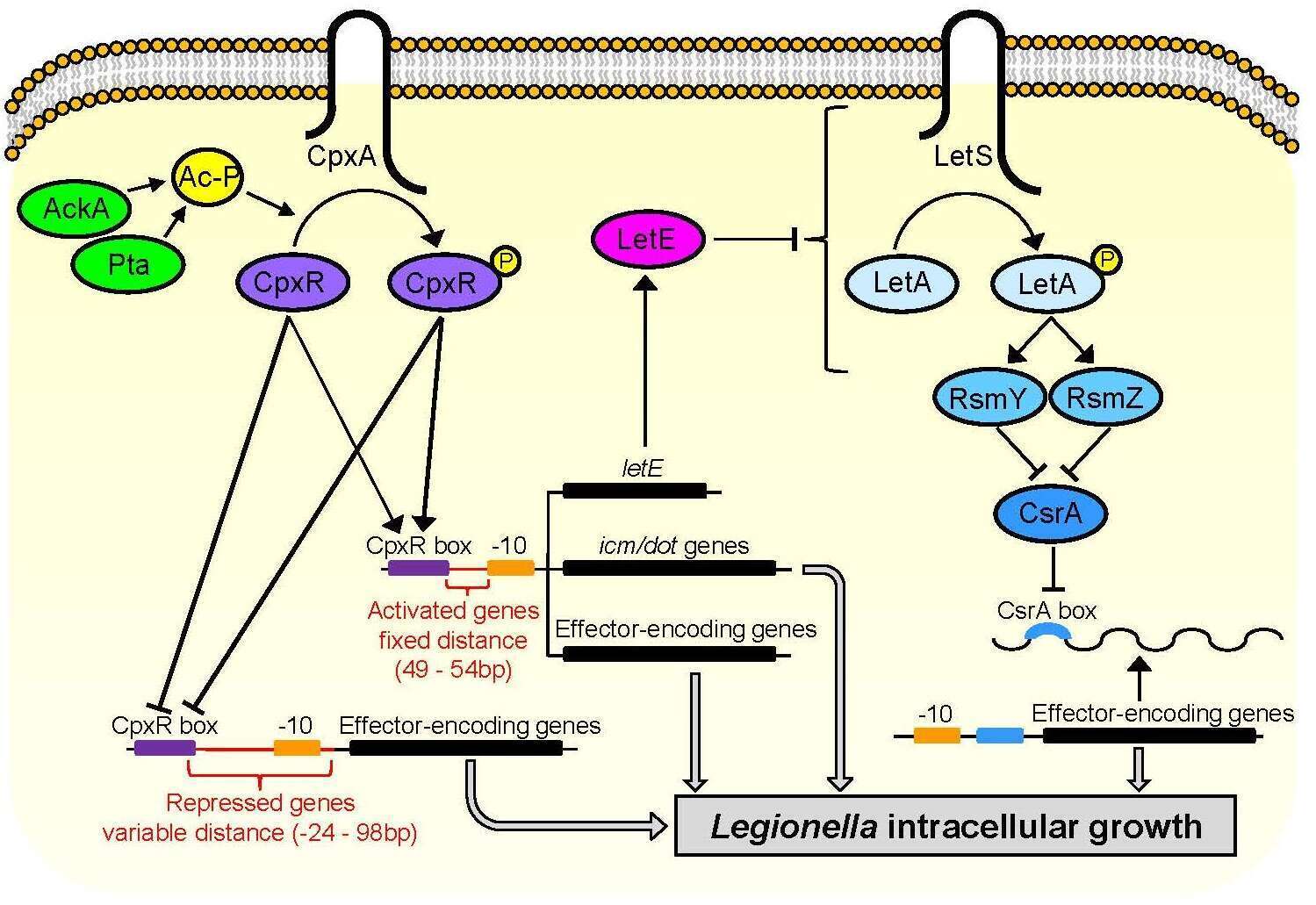
THE LEGIONELLA PNEUMOPHILA CPxRA TWO-COMPONENT REGULATORY SYSTEM - NEW INSIGHTS INTO CpxR`s FUNCTION AS A DUAL REGULATOR AND ITS CONNECTION TO THE EFFECTORS REGULATORY NETWORK
Legionella pneumophila utilizes the Icm/Dot type-IV secretion system to translocate approximately 300 effector proteins into host cells, and the CpxRA two-component system (TCS) was previously shown to regulate the expression of several of these effectors. In this study, we expanded the pool of L. pneumophila CpxR-regulated genes to 38, including 27 effector-encoding genes. Our study demonstrates for the first time that the CpxR dual regulator has different requirements for activation and repression of target genes. These differences include the positioning of the CpxR regulatory element relative to the promoter element, and the effect of CpxR phosphate donors on the expression of CpxR target genes. In addition, unlike most response regulators, a mutant form of the L. pneumophila CpxR which cannot be phosphorylated was found to self-interact, and to repress gene expression similarly to wild-type CpxR, even though its ability to activate gene expression was reduced. Moreover, the CpxRA TCS was found to activate the expression of LetE which was found to function as a connector protein between the CpxRA TCS and the LetAS-RsmYZ-CsrA regulatory cascade. Our results show that CpxR plays a major role in L. pneumophila pathogenesis gene expression and functions as part of a regulatory network.

Powered by Eventact EMS